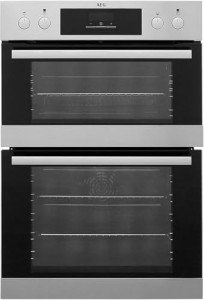15 Incredible Stats About Ovens Built In
The Comprehensive Guide to Built-in Kitchen Ovens
Ovens are among the most necessary appliances in any kitchen, working as the heart of meal preparation. Amongst the various types of ovens available, built-in kitchen ovens are progressively popular for their space-saving styles, visual appeal, and flexibility. This article explores whatever you need to learn about built-in kitchen ovens, including their types, advantages, setup factors to consider, and top brand names available on the marketplace today.
What is a Built-in Kitchen Oven?
A built-in kitchen oven is an appliance that is integrated into the cabinetry of a kitchen. Unlike freestanding ovens, which are standalone units that can be moved, built-in ovens are created for fixed placement within the kitchen space. This style feature permits a seamless circulation in kitchen visual appeals, contributing to smooth, modern kitchen styles.
Kinds Of Built-in Ovens
Built-in ovens can be found in numerous types, accommodating various culinary requirements and choices. The two primary classifications are:
Single Built-in Ovens:
- These ovens feature one cooking compartment and are perfect for smaller sized kitchens or homes that do not require comprehensive cooking abilities. built in double oven and hob offer sufficient space for baking, roasting, and broiling.
Double Built-in Ovens:
- Double ovens include two separate cooking compartments and are best for households or those who captivate typically. They enable synchronised cooking at various temperature levels, offering increased efficiency and versatility in meal preparation.
Advantages of Built-in Ovens
Built-in ovens are praised for numerous reasons, making them a popular option amongst house owners and chefs alike. Here are some of the significant advantages:
Space-Saving Design: Built-in ovens are developed to fit flawlessly into kitchen cabinets, making them ideal for smaller sized areas or modern kitchen styles.
Aesthetic Appeal: These ovens create a structured look in the kitchen and are readily available in different surfaces to match various interior designs.
Ergonomic Placement: Built-in ovens can be installed at eye level, lowering the requirement to flex down when placing or removing food, thus enhancing convenience and security.
Versatility: Many built-in ovens included sophisticated functions, such as convection cooking, steam cooking, and self-cleaning alternatives, enabling for varied cooking strategies.
Factors to Consider When Choosing a Built-in Oven
When selecting a built-in oven, several aspects should be considered to ensure it fulfills particular requirements and choices:
Size and Dimension: Measure the available area in your kitchen to determine the suitable size of the oven. Standard built-in ovens typically measure 24, 27, or 30 inches broad.
Fuel Type: Choose in between gas or electric ovens based on personal preference and utility accessibility. Gas ovens use quick heat and much better temperature control, while electric ovens tend to heat more equally.
Features: Look for functions such as self-cleaning capabilities, wise technology connectivity, and extra cooking modes (like broil, bake, or steam).
Cost Range: Built-in ovens come at different cost points. Identify your budget plan and consider both the preliminary expense and possible energy savings over time.
Installation Considerations
Setting up a built-in oven typically requires expert support to make sure safety and compliance with local building codes. Here are some suggestions for installation:
Professional Installation: It is highly advised to employ a licensed professional to handle the setup of electrical or gas lines.
Ventilation: Ensure sufficient ventilation, especially for gas ovens, to prevent any accumulation of hazardous gases.
Kitchen cabinetry Planning: Consult with a kitchen designer to plan cabinets that accommodates the oven's specifications and includes needed clearances.
Popular Brands of Built-in Ovens
Numerous brands are acknowledged for their quality and development in built-in ovens. Here are a few of the leading options:
Brand
Noteworthy Features
Rate Range
Bosch
European style, versatile features
₤ 1,200 – ₤ 4,000
KitchenAid
Variety of colors, outstanding baking performance
₤ 1,500 – ₤ 3,500
Samsung
Smart technology combination, high capacity
₤ 1,200 – ₤ 3,000
GE Appliances
Affordable options, robust features
₤ 900 – ₤ 2,500
Miele
Extraordinary craftsmanship, advanced innovation
₤ 2,500 – ₤ 10,000
FAQs about Built-in Kitchen Ovens
Q1: Can I install a built-in oven myself?
A1: While some property owners may try to set up a built-in oven, it's advised to hire professionals, particularly for gas models, to make sure safety and compliance with local codes.
Q2: Do built-in ovens require a particular kind of cabinetry?
A2: Yes, built-in ovens typically require cabinetry developed for them. It is necessary to think about the oven's dimensions and needed clearances when preparing your kitchen cabinetry.
Q3: Are built-in ovens more expensive than freestanding ovens?
A3: Built-in ovens can be more pricey than freestanding designs due to their style and setup requirements, but they use a more integrated look and possible boosted features.
Q4: Can built-in ovens be fixed quickly?
A4: Repairs depend on the problem; typical issues can frequently be dealt with without requiring to replace the whole system. Nevertheless, built-in ovens may be more challenging to access, so professional assistance is suggested.
Built-in kitchen ovens provide an elegant, practical, and effective solution for modern home cooking. With a range of choices offered and essential factors to think about, selecting the ideal built-in oven can considerably boost your cooking experience while complementing your kitchen design. By comprehending their benefits, installation details, and popular brands, house owners can make educated decisions that fulfill both practical requirements and aesthetic choices. Whether you are a daily cook or a cooking lover, a built-in oven can be a deserving financial investment for your kitchen.
